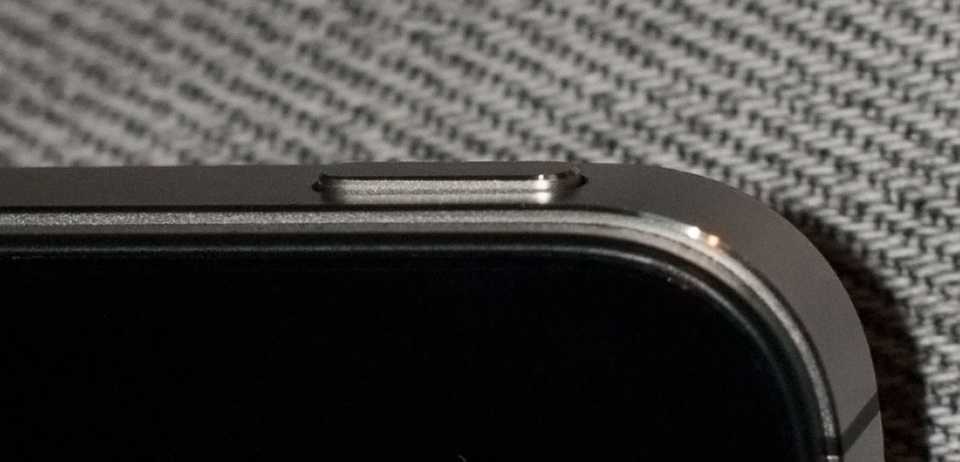Chamfer
After the announcement of the iPhone 5, I was struck by the details of the iPhone’s manufacturing process shown in the iPhone video. In the video, Ive discusses the cutting of the chamfer that joins the iPhone’s flat back to its perpendicular sides. I’d never thought about a chamfer in any great detail before, and I directed my attention to my iPhone 4S to see if there were any chamfers. What I found was an excellent example of the benefits of a chamfer and Apple’s attention to detail.
>
The iPhone 4S Sleep/wake button.
Here’s the Sleep/wake button on my iPhone 4S. Note the moderately pronounced chamfer on the top right of the button. The chamfer continues along the front and back of the button, tapering until it is nearly insignigicant on the button’s left edge. This simple chamfer changes the profile of the Sleep/wake button on the left side from that on the right side.
From the left, when a finger slides across the edge of the button, the reduces chamfer creates a sharper edge. This sharpness gives the button a feeling that it is distinct from the top of the phone. This sharpness makes it easier to find the button by feel during use. The right side of the button is near the edge of the iPhone, so it is more likely to be bumped or catch on objects. An iPhone that catches and scratches other objects is not a good user experience, so Apple rounds out the corner with a chamfer. The chamfer softens the edge, thereby preventing the button from catching or scratching.
This detail on the Sleep/wake button provides an example of a chamfer being applied to solve a real-world problem, and Apple’s attention to detail. I’m confident that no one would complain if the iPhone 4S shipped without an asymettrically chamfered Sleep/Wake button, but the iPhone is that much nicer for having it.
